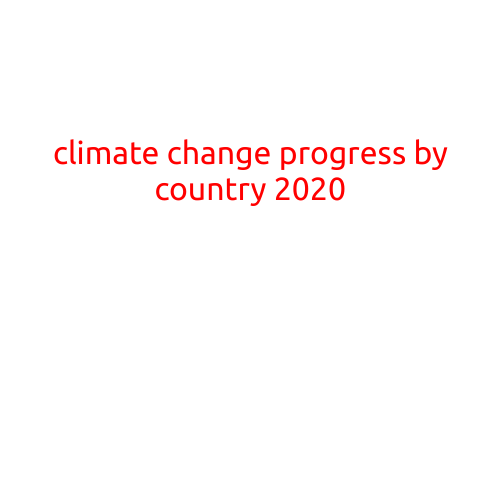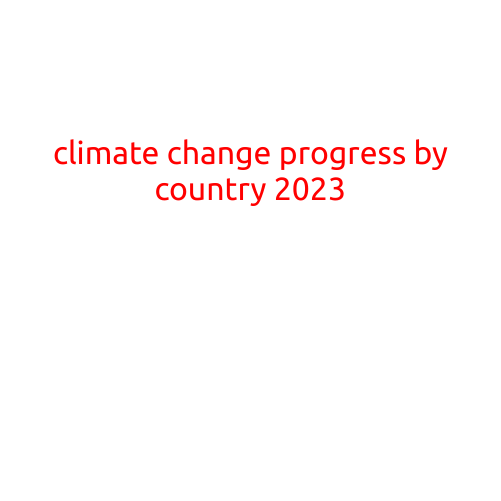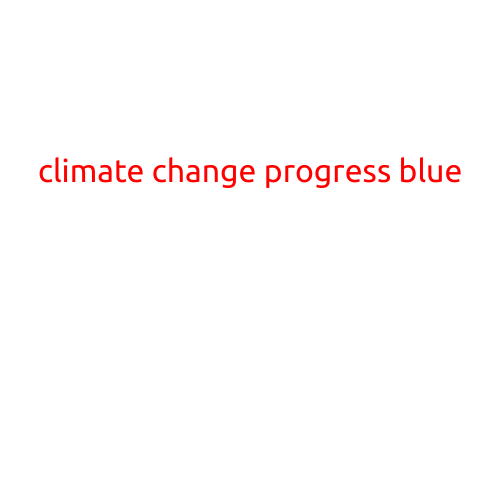
Climate Change Progress by Country 2020: A Global Update
As the world continues to grapple with the challenges posed by climate change, it is essential to monitor the progress made by countries in reducing their carbon footprint and transitioning to a more sustainable future. The good news is that, despite the setbacks and challenges, many countries have made significant progress in 2020. In this article, we will provide an overview of the climate change progress made by countries around the world.
The Top 10 Climate Change Leaders
According to the Climate Change Performance Index (CCPI) 2020, the top 10 countries in terms of climate change performance are:
- Sweden: With a score of 82.68, Sweden takes the top spot for its robust climate policies, strong emission reductions, and high carbon pricing.
- Norway: Norway comes in second with a score of 79.84, thanks to its significant reductions in greenhouse gas emissions and strong climate policies.
- Switzerland: Switzerland takes the third spot with a score of 78.56, driven by its low carbon intensity and strong climate policies.
- Denmark: Denmark ranks fourth with a score of 77.32, thanks to its strong wind energy sector and commitment to carbon neutrality.
- UK: The UK places fifth with a score of 76.56, driven by its ambitious climate goals and strong policy framework.
- Austria: Austria comes in sixth with a score of 75.76, thanks to its low carbon intensity and strong climate policies.
- Finland: Finland takes seventh place with a score of 75.44, driven by its strong forestry sector and commitment to carbon neutrality.
- Germany: Germany ranks eighth with a score of 75.22, thanks to its renewable energy sector and strong policy framework.
- Canada: Canada comes in ninth with a score of 74.56, driven by its ambitious climate goals and strong policy framework.
- France: France takes the tenth spot with a score of 74.32, thanks to its strong climate policies and commitment to carbon neutrality.
The Laggards
Unfortunately, not all countries have made significant progress in reducing their greenhouse gas emissions. According to the CCPI 2020, the bottom 10 countries in terms of climate change performance are:
- Middle East countries: Countries such as Saudi Arabia, Iraq, and Iran rank among the lowest due to their high carbon intensity and lack of climate policies.
- North Korea: North Korea comes in last place with a score of 12.78, driven by its lack of transparency and lack of climate policies.
- South Sudan: South Sudan ranks second to last with a score of 14.22, thanks to its limited infrastructure and lack of climate policies.
- Sudan: Sudan comes in third from the bottom with a score of 15.24, driven by its lack of renewable energy sector and limited climate policies.
- Laos: Laos ranks fourth from the bottom with a score of 16.18, thanks to its limited infrastructure and lack of climate policies.
Key Takeaways
The 2020 Climate Change Progress Report provides a snapshot of the progress made by countries around the world in reducing their carbon footprint and transitioning to a more sustainable future. The report highlights both the successes and challenges faced by countries, and provides a roadmap for future action. Key takeaways from the report include:
- The top 10 countries have made significant progress in reducing their greenhouse gas emissions and implementing climate policies.
- The bottom 10 countries have made limited progress and require urgent attention and support to address their climate challenges.
- The report emphasizes the need for continued international cooperation and policy frameworks to address the global challenge of climate change.
Conclusion
As the world grapples with the challenges posed by climate change, it is essential to recognize both the successes and challenges faced by countries around the world. The 2020 Climate Change Progress Report provides a valuable framework for understanding the progress made by countries and identifying areas for improvement. As the international community works towards achieving the goals of the Paris Agreement, it is critical to continue to monitor and support countries in their efforts to reduce greenhouse gas emissions and transition to a more sustainable future.





